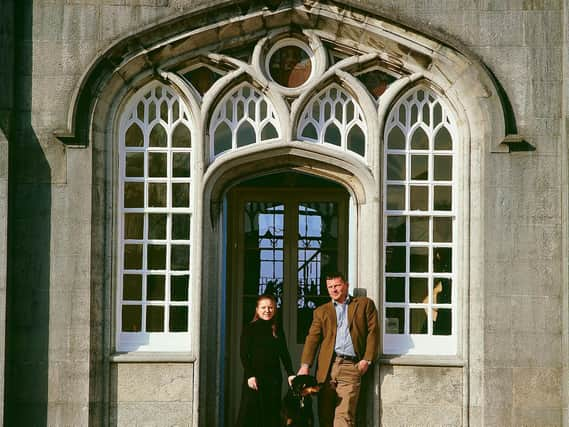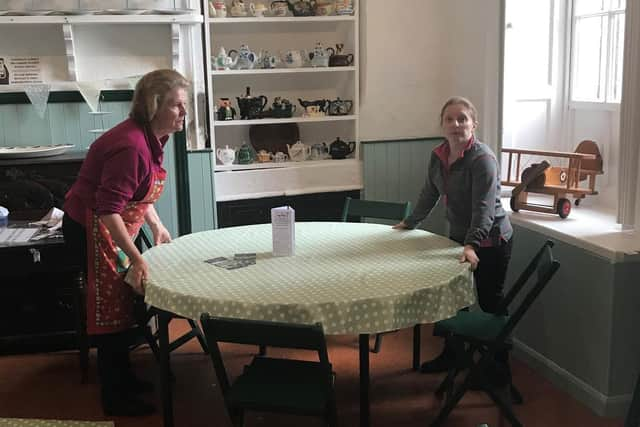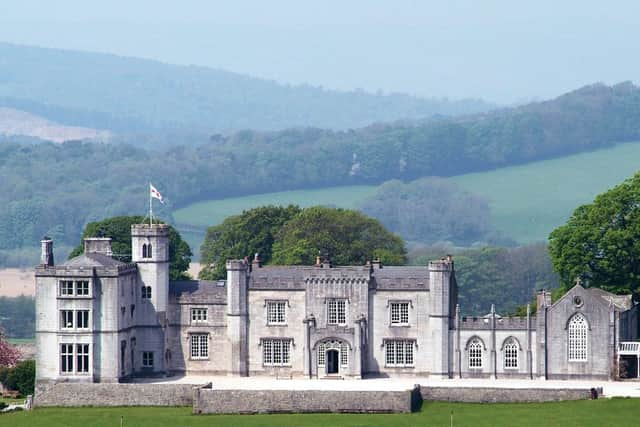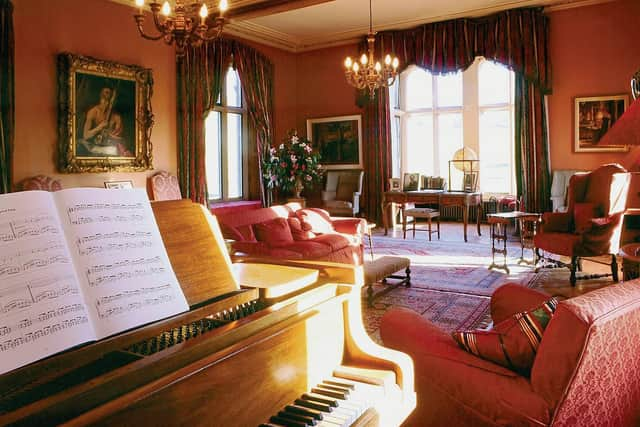Lockdown life in a Lancashire stately home


“I know we were just one among thousands of businesses suddenly shut down,” says Lucy who is estate manager at Leighton Hall and her family have lived there for generations. “But when your job is your home too, everything takes on a much greater significance.”
And not your usual semi-detached house at that. The current hall was built in 1760 and remodelled in the latest ‘Gothic’ fashion in the 1820s. But its history goes back much further.
Advertisement
Hide AdAdvertisement
Hide Ad“Records show a fortified manor was already here in 1246,” says Lucy. “Since then, 26 generations have replaced, extended, and rebuilt it across the centuries. I can trace my family tree back to Adam D’Avranches, that very first resident recorded back in the 13th century.”


Does it feel like she has to balance responsibility towards previous generations with the very modern day pressures of running the hall?
“It certainly feels like they’re peering over your shoulder at times,” she smiles. “And probably pondering the weird things I’m doing. I can’t imagine Albert Hodgson, who lived here through the Jacobite Rising, spent much time worrying about health and safety, or budgeting for a new biomass boiler.”
Adapting to coronavirus while protecting the hall’s heritage has involved a cyclone of plate-spinning, form-filling and legal obligations. “Obviously we wanted to ensure the comfort and safety of our staff and visitors,” says Lucy.
Advertisement
Hide AdAdvertisement
Hide Ad“We know everything takes longer in a heritage building, but there was so little support, it really sapped my confidence. When it was announced the leisure industry could reopen on July 4, historic houses were completely left out of the loop. And yet we have so many individual requirements. Modern, purpose built attractions can adapt, even moving walls and changing access routes. However, you simply can’t do that in Georgian, Gothic revival hall.


“Our doors, floors, passageways and stairs are where they are, and that’s that. For weeks I wandered about in a bit of a daze, trying to work it out. You can’t glue distancing stickers to antique carpets, or nail Perspex screens to 18th century oak panelling. I have always loved Leighton and still do, how could I not?, but with the real fear of not being able to surmount this, combined with dwindling finances and many responsibilities, at times it felt dangerously close to a millstone.
“We’re not the National Trust, or a huge stately home with an attic full of Canalettos. This is very much a family business based in a family home with amazing staff, many of whom live on the estate. We’re a strong, supportive team and have had many emotional conversations. I even dreamed about it, many nights.”
One conundrum for Lucy was the treasures unique to Leighton. The hall is the family seat of the Gillow furniture making dynasty, with Lucy directly descended from its founder, Robert Gillow.
Advertisement
Hide AdAdvertisement
Hide AdAmong the most lauded British fine furniture and cabinet making firms of the 18th and 19th centuries, Gillow pieces were so desired, they feature in Jane Austen’s writings and a Gilbert and Sullivan’s opera


“Gillows were even commissioned to supply items such as panelling, furniture, and chandeliers for the first class areas of the Titanic,” says Lucy. “Many people find out about Leighton through the Gillow connection. We’re lucky to have an exceptional collection of original historic pieces in the house, from delicate carved ornaments to grand furniture.
“We’ve always prided ourselves on offering a friendly informal welcome. People are invited to explore, ask, sit, touch, and enjoy our rooms and pieces. It’s been a question of installing covid safeguards without taking away the informal, relaxed atmosphere, which is so important to us and our visitors.” While Lucy gradually mulled over the answers she needed, she turned her thoughts to the outdoors.
“Our 19th century walled garden is my mother’s realm. Over the years, she’s encouraged a cottage garden feel, with rose covered walls, a fragrant herb patch, and overflowing borders. It was definitely somewhere both she and I were drawn to this spring.
Advertisement
Hide AdAdvertisement
Hide Ad"When we needed to take a breather from planning and worrying, it was a comfort to be surrounded by the smell of the flowers and hum of the Leighton bees. Before full lockdown happened we’d already made adaptations to our visitor flow and tearoom services, so I knew we could easily open the grounds. But it didn’t feel right without including the house.”


This was why Leighton remained closed on July 4 despite so many other places opening.
“It was really hard,” admits Lucy. “Talking of previous generations, it was my grandfather Major James Reynolds who originally opened the house to the public in 1958. In a letter to the Morecambe Visitor in 1958, which was only rediscovered last year, he outlined the dire straits many country houses found themselves in after the war.
“Charging a few shillings to let the public in became integral to their survival. My ancestors absolutely loved sharing the hall’s history and secrets with visitors, just as we have done ever since. The house really comes alive when its rooms are full of people. Re-reading his letter and looking around at all he started made seeing the doors closed on May 1 for the first time in 61 years even more heart-breaking.”
Advertisement
Hide AdAdvertisement
Hide AdWith hard work by the whole team under Lucy’s direction, Leighton’s doors were reopened on July 16. This was a cause for cautious celebration, not least as Lucy is looking to Leighton’s future just as much as its historic past.
“We’re starting slowly,” she says, “Because we’re passionate about doing it right. So we’re just opening on two afternoons a week, and visitors will need to pre-book, to ensure safe distancing and smaller, staggered house tours.
“It feels a big step, but it’s a fraction of what we’re usually doing. As well as family visitors, we usually host coach parties, themed tours, corporate groups, concerts, events, weddings and school groups, who I’m especially missing: they really liven the place up.
“Maintaining a historic estate is a real balancing act: taxes and duties have multiplied over the last 60 years. But it’s been wonderful to welcome back friends, visitors, and our loyal staff and volunteers”
Advertisement
Hide AdAdvertisement
Hide Ad“I, my amazing parents, my foresighted grandfather and all the generations before are simply custodians, looking after a small slice of Leighton’s rolling history. However scary a time we’ve been through, hopefully this is just the first step to safeguarding Leighton’s survival for the next generation. Me? I’m already busy planning for Christmas.”
Leighton Hall is currently open 2pm -5pm Thursdays and Sundays, advance booking required, at the moment we are not able to offer the Birds of Prey Display.
See www.leightonhall.co.uk, and ‘Leighton Hall’ on Facebook for the latest news, updates and booking information.
Comment Guidelines
National World encourages reader discussion on our stories. User feedback, insights and back-and-forth exchanges add a rich layer of context to reporting. Please review our Community Guidelines before commenting.